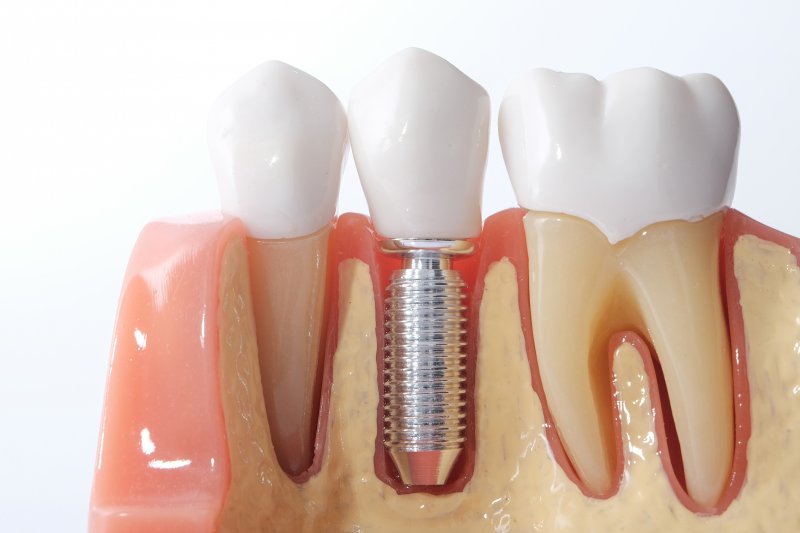
As with anything, the cheaper the materials are, the more likely they are to unravel, break down, or fail. While you may be fine with this approach when buying certain items, your smile shouldn’t be one of them. Dental care is already a costly expense for many individuals, so choosing to go with cheaper dental implants will only cause you to spend more over time. Read on to learn how their materials can make a difference when it comes to how long these prosthetics stay in place.
How Do the Parts of a Dental Implant Impact Its Longevity?
A dental implant is made up of three parts – the post, the abutment, and the custom restoration. Each plays an integral role in the overall success of your smile and overall health, so making sure they are crafted from high-quality materials is essential.
To better understand why this matters, here is a clearer explanation of each piece and the kinds of materials that are commonly used:
Your Implant Post
This is the portion of the implant that fuses with the jawbone. It looks similar to a screw but mimics the function of a tooth root. This is often crafted from titanium or zirconia depending on the dentist’s and patient’s preference.
Both materials are biocompatible, so individuals with metal sensitivities can breathe freely when receiving this type of treatment. Also, they’re highly durable and stable, lifelike in appearance, and are unlikely to experience corrosion over time.
Your Abutment(s)
When it comes to the small appliance that connects the restoration to the implant – the abutment – the same materials are often used: titanium and zirconia.
Titanium can be used with all types of artificial teeth and is known for its strength. Zirconia is also strong and delivers a more aesthetically pleasing approach. When using titanium for the abutment, a patient can expect a secure bond between their implant and restoration. If zirconia is used, it will be more resistant to wear and tear while delivering longer-lasting stability.
Your Custom Restoration
Custom restorations – crowns, bridges, and dentures – can be crafted from various materials, but the most common are porcelain and acrylic.
Porcelain looks more like natural tooth enamel, creating a more visually appealing aesthetic, while acrylic is not as heavy, so it tends to be less expensive. It is also not as durable as porcelain, which means it will likely need to be replaced more frequently. Porcelain, though, can be prone to breakage if too much pressure is applied.
Ultimately, the materials listed are excellent options for building a new smile; however, you must weigh the pros and cons of each to determine which one will be right for you.
About the Practice
Westgate Dental Care cares about the needs of each patient. When one arrives with multiple missing teeth, our team of specialists and dental experts will personalize a plan that not only aligns with the patient’s vision and goals but also delivers a long-lasting smile. Using only the best materials on the market, individuals can expect beautiful and worthwhile results when working with our team. If you want to learn more about our Straumann® dental implants, visit our website or call us at (847) 908-3684.
